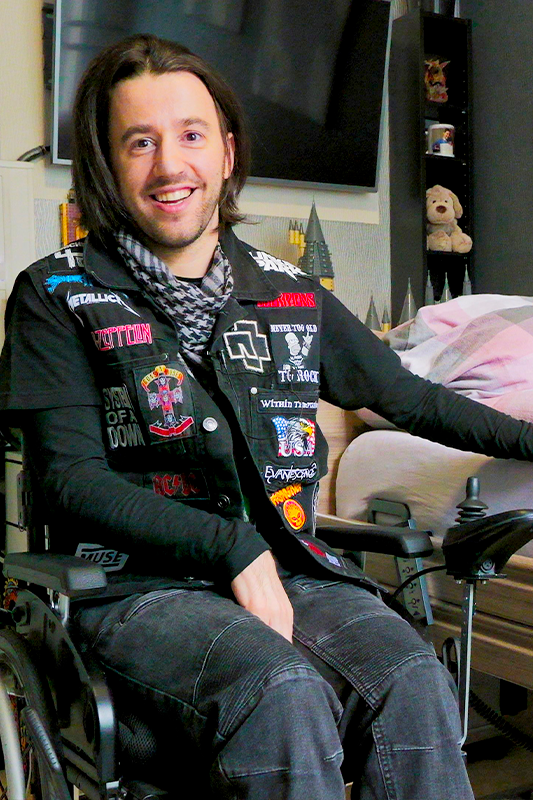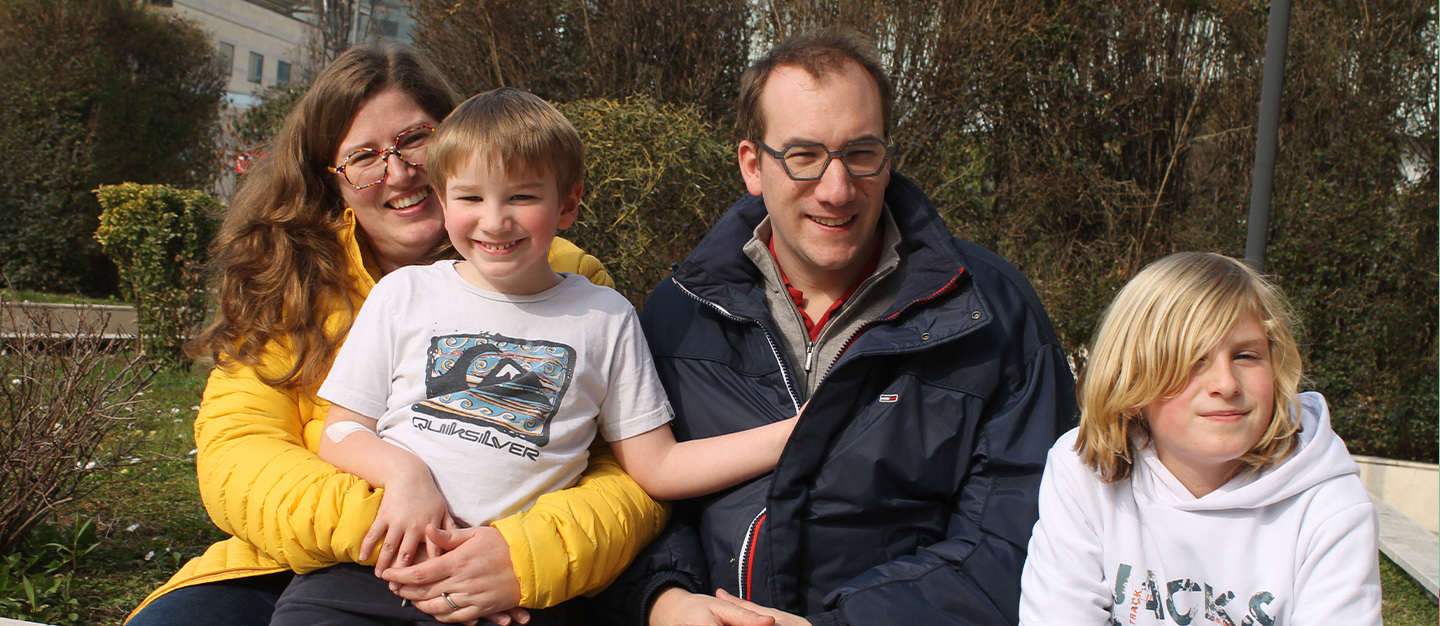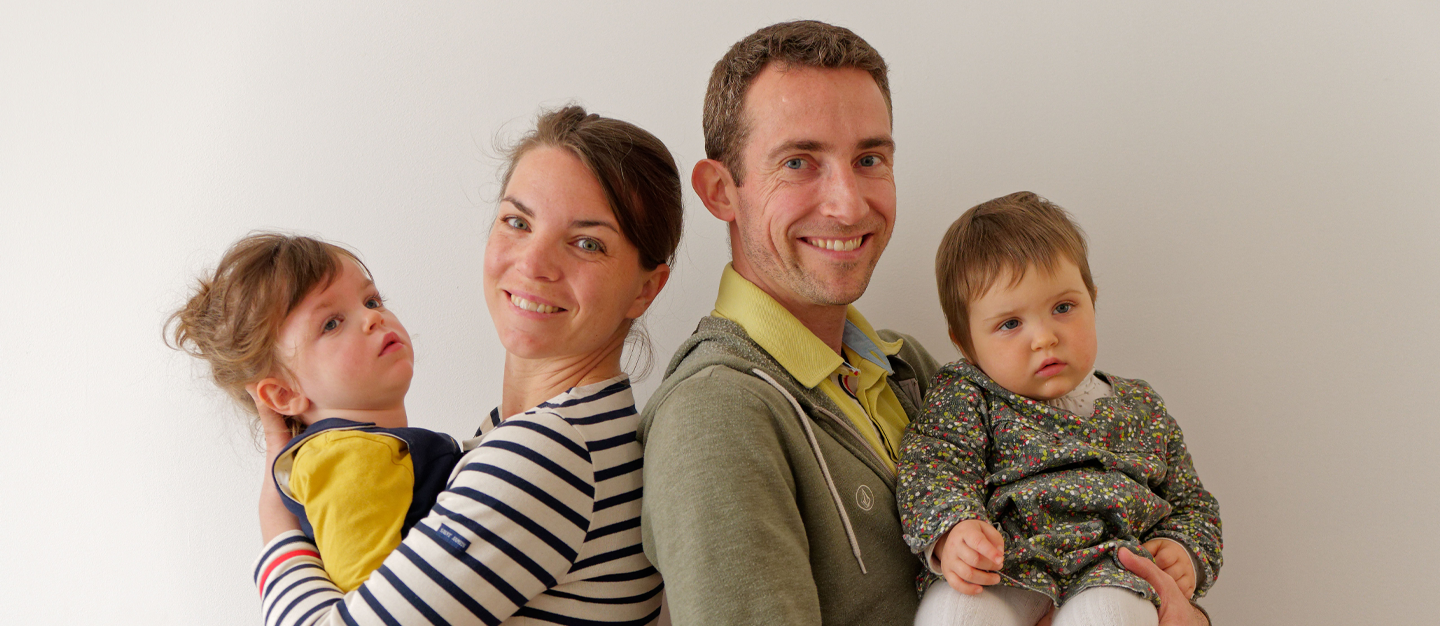Discover Samuel’s story.
At the age of 4, Samuel was diagnosed with an orphan disease, MLC1 (megalencephalic leukoencephalopathy with subcortical cysts), and there was no hope. His parents, Cécile and Étienne, were devastated. 30 years later, Samuel is still here. With a cheeky smile and a life-saving sense of humour, despite all the medical complications and the exhausting administrative efforts of his family. Samuel has been able to go to school, develop a passion for music and maintain loyal friendships. Until recently, he even worked in a company with an adapted timetable.
In thirty years, his disease has evolved, but research has made progress. While there is still no treatment that can stop it, the results of studies are promising, particularly with regard to motor skills, as Spanish researcher Assumpció Bocsh explains.

“Today, there is no treatment available for patients with MLC. Our main objective is to find a treatment for MLC using an advanced therapy such as gene therapy and to identify new indicators that will make it possible to demonstrate that it works.
As head of a research team, I have been working since 2015 on all the studies needed before considering a clinical trial using gene therapy for MLC.
According to our latest laboratory trials, our results are encouraging because we have seen the regression of certain symptoms, even when they have been present for some time. We have been able to correct motor and co-ordination symptoms and also observe improvements on brain imaging. But that’s just the beginning…
It is difficult to obtain funding for research into rare or ultra-rare diseases, as most pharmaceutical companies and even public funding agencies prefer to invest their resources in more widespread diseases, in order to target more patients.
To date, ELA is our only financial partner for the MLC gene therapy project. We are grateful for their support, and we really need their help to move forward with the gene therapy treatment of MLC patients.
Discover the story of Samuel and his family in pictures:

Tomorrow’s successes are based on yesterday’s discoveries and today’s advances.
For more than 30 years, many decisive advances have demonstrated the success of the teams supported by ELA:
“The gene therapy the children received has enabled them to return to a normal life”. Professeur Jean-Hugues Dalle (France) à propos de l’adrénoleucodystrophie (ALD).
“The efficacy of the treatment is now recognised and validated for Europe”, Dr Francesca Fumagalli (Italy) on metachromatic leukodystrophy (MLD).
“We are testing gene therapy treatments with promising results. We now need to confirm these results in humans”, Dr. Assumpció Bosch (Spain) on Samuel’s MLC.
For Samuel, his parents and all the other families affected by this disease, your support is essential:





















